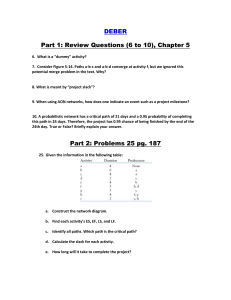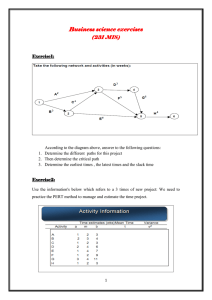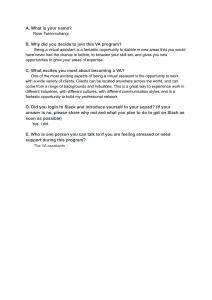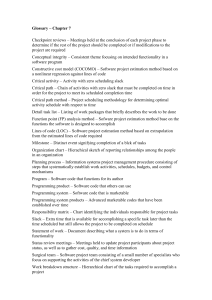Network Diagram & Critical Path Analysis Presentation
advertisement
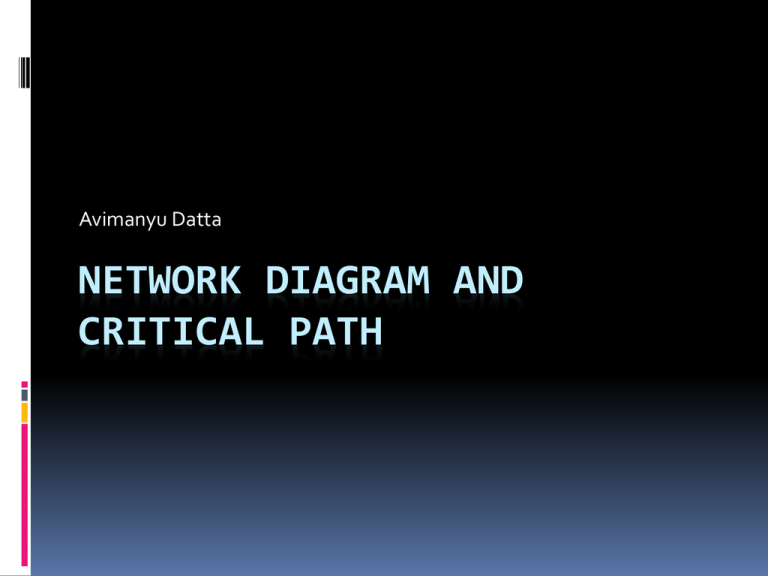
Avimanyu Datta NETWORK DIAGRAM AND CRITICAL PATH Activity Duration and Preceding Activities Activity Duration (Days) Preceding Activity A 1 - B 2 - C 3 - D 4 A E 5 B F 4 B G 6 C H 6 D,E I 2 G J 3 F,H,I Some Key Definitions ET: Estimated Duration TE: Earliest Expected Completion Time TE = Max [TE (Previous Process) ]+ ET (Current Processes) TL: Latest Expected Completion Time: Time in which an activity can be completed without delaying the project TL =Min[ TL (Later Process ) – ET (Later Process)] SLACK = TL-TE. Zero Slack = Zero Flexibility. Network Diagram with ET D ET=4 A ET=1 H ET=6 E ET=5 B ET=2 J F ET=4 C ET=3 G ET=6 I ET=2 ET=3 Network Diagram with ET and TE START From HERE TE= 1 We take the TE from Process E rather than Process D. Because TE(E)> TE (D) TE= 5 D ET=4 TE = 13 A ET=1 TE = 7 TE = 2 H ET=6 E ET=5 TE= 16 B ET=2 J TE= 6 TE = 3 We take the TE from Process H rather than Process I or F. Because TE (H) >TE(I)> TE (F) F ET=4 C ET=3 TE = 9 G ET=6 TE = 11 I ET=2 ET=3 Network Diagram with ET and TE TE= 5 TE= 1 D ET=4 A ET=1 TL= 7 TL = 3 TE = 7 TE = 2 E ET=5 B ET=2 TL = 7 TL = 2* TE = 3 C ET=3 TL = 5 * We take TL from Process E rather that Process F because TL-ET for E is lover that that of F TE = 13 H ET=6 TL = 13 TE= 16 J TE= 6 ET=3 TL = 16 F ET=4 TL = 13 TE = 9 G ET=6 TL=11 TE = 11 I ET=2 TL = 13 START From HERE Critical Process and Critical Path Path comprising of TE= 5 TE= 1 D ET=4 A ET=1 TL= 7 TL = 3 TE = 7 TE = 2 E ET=5 B ET=2 TL = 7 TL = 2 TE = 3 C ET=3 TL = 5 Process where Slack ( TL-TE) = 0 TE = 13 H ET=6 TL = 13 TE= 16 J TE= 6 ET=3 TL = 16 F ET=4 TL = 13 TE = 9 G ET=6 TL=11 TE = 11 I ET=2 TL = 13 CRITICAL PATH I S B E H J Critical Path: Questions to Ponder upon What is the importance of Critical Path? How will you distribute your resources when you know the critical path? What happens if process within a critical path is delayed?
